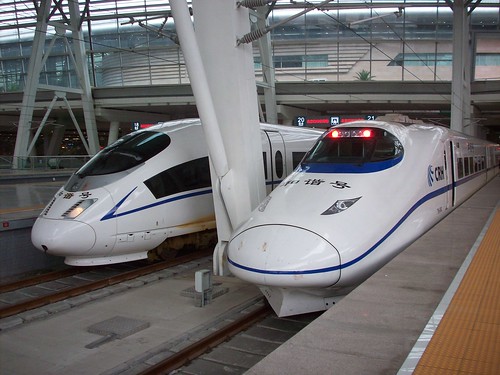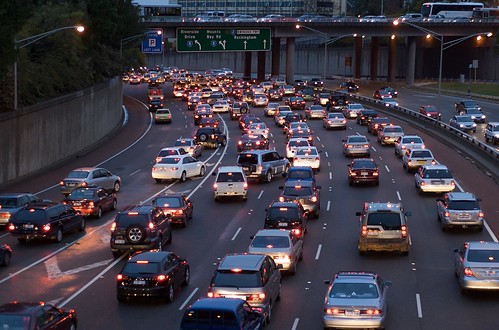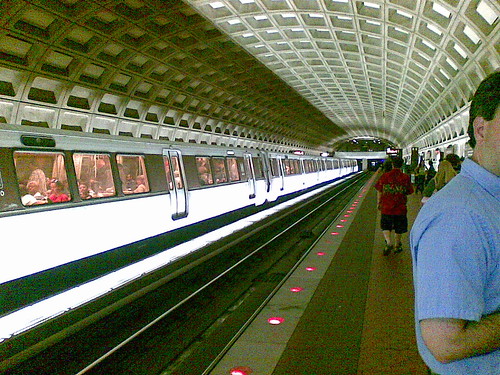(Source: Autobloggreen) & HyNor)

As the US government is cutting down its funding and research/deployment interest in Hydrogen-based transportation systens, Norway is thinking the exact opposite. In an all out push, Norway is moving ahead with the deployment of a 580 kilometer highway peppered with hydrogen fueling stations. One of the biggest questions surrounding hydrogen-powered vehicles right now is where to find an appropriate hydrogen pump, and looks like Norway has moved to answer that question by opening it up its first hydrogen highway.
This hydrogen highway is part of Norway’s HyNor project and stretches for 580 kilometers from Oslo on the eastern coast to Stavanger on the western North Sea coast. So far, the route consists of 12 hydrogen pumps, which is apparently sufficient to allow the Mazdas to be refueled along the way.
It is worth something and appropriate to mention a recent New York Times article titled “Norway Thrives by Going against the tide“, which articulates how Norway’s investment decisions for its future saved its economy from going bust, while the recession monster is shaking up the financial foundations of many Western economies, including those of US and UK. The article points out “With a quirky contrariness as deeply etched in the national character as the fjords carved into its rugged landscape, Norway has thrived by going its own way. When others splurged, it saved. When others sought to limit the role of government, Norway strengthened its cradle-to-grave welfare state. And in the midst of the worst global downturn since the Depression, Norway’s economy grew last year by just under 3 percent. The government enjoys a budget surplus of 11 percent and its ledger is entirely free of debt.”
If the above mentioned investment decision is a good indicator to go by, Norways decision to invest in a hydrogen based transportation future seems foretelling and something worth noting, especially for the United States which just dealt a blow to hydrogen research by cutting down the investment. The HyNor website notes the following: The HyNor Partnership and StatoilHydro are pleased to announce the official opening of the Norwegian hydrogen highway, HyNor, on 11 May 2009 at StatoilHydro’s new hydrogen station at Økern in Oslo. HyNor was opened by Norway’s Minister of Transport and Communications, Liv Signe Navarsete. H.R.H. Crown Prince Haakon of Norway joined the first stage of the EVS Viking Rally, from Oslo to Lier, together with internationally renowned race car driver Henning Solberg. The governing mayor of Oslo, Erling Lae, opened StatoilHydro’s new hydrogen service station at Økern, and Navarsete opened the hydrogen station at StatoilHydro’s service station in Lier.
The first hydrogen station was opened at Forus in Stavanger in 2006, the second in Porsgrunn in 2007, and now the two new stations are open in Oslo and Lier. HyNor has some 50 partners and manages a fleet of more than 50 hydrogen vehicles made by Mazda, Toyota and Think.
“We are very pleased to open up this hydrogen infrastructure for testing and demonstrating hydrogen cars. By doing this, we nurture our ambition to help implement hydrogen as a fuel in the transport sector,” says Anne Marit Hansen, Chairman of the board in HyNor.

The EVS Viking Rally vehicles are the first to drive the Norwegian hydrogen highway. The rally commences with H.R.H. Crown Prince Haakon racing together with the famous Norwegian race car star Henning Solberg. 14 hydrogen vehicles, two plug in hybrid cars and 14 battery electric vehicles are starting in Oslo and will reach the beginning of the EVS (Electrical Vehicle Symposium) 24 in Stavanger on 13 May. Events will take place along the way in Porsgrunn, Grimstad, Arendal, Kristiansand, Lyngdal and Egersund. Another 10 battery electric vehicles will join the rally in Egersund.
This is reportedly the first integrated network of hydrogen pumps in the world, and it’s a creation of Norway’s StatoilHydro, the company that installed the underlying structure as well. Future plans call for the highway to extend into the rest of Scandinavia, as shown in the map to the right. Afterward, the alliance intends to extend into Germany. For your information, Mazda has shipped the first Hydrogen RX8 REs to Norway, indicator of a strong response to the government’s interest in Hydrogen vehicles.
Note: A related article from NY Times articulates how California’s efforts to build a similar Hydrogen Highway has fallen behind. One of the leading investors in Hydrogen fuel research was the State of California. Soon after Gov. Arnold Schwarzenegger (R) took office in 2003, he set in motion a campaign promise to build, by 2010, a “hydrogen highway” composed of 150 to 200 fueling stations spaced every 20 miles along California’s major highways. In spite of the great interest, the hydrogen infrastructure has not expanded much since its inception. the program has fallen short of expectations. With less than 10 months until the end of the decade, 24 hydrogen fueling stations are operating in California, most of them near Los Angeles.State officials say all this is part of what they now view, in the words of ARB spokesman Dimitri Stanich, as a “retooled” hydrogen highway.
“It’s very much alive,” Stanich said of the program. “This vision is still there. It’s just being groomed.”












